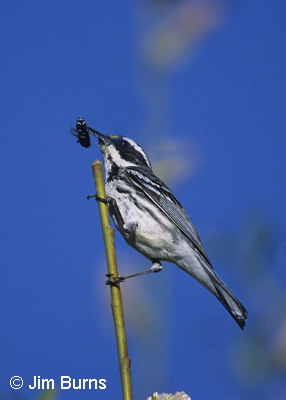
Get out early. Birds do what you ought to do first thing after you wake up in the morning. They haven't eaten for several hours, and they need fuel. From first light to mid-morning is the peak of most birds' daily activities. Be out there.
Go slowly, avoid sudden movement. You'd think this would be obvious, but when you get on something you're going to get excited, start pointing, or run around to the other side of the tree for a better view. Stand still. Be patient. Sudden movement spooks wildlife much quicker than quiet conversation.
Be quiet. Birds have ears. A lot of experienced birder forget this, especially when they get together and start reminiscing (lying) about past trips.
Wear dark clothing. Avoid white and bright or reflective colors. You don't need to wear full camouflage, but there's a reason hunters and wildlife photographers do. Blending into the scenery allows closer approach, and if you blend into the scenery and aren't moving, birds can't see you and may even approach you.
Keep your eyes on the bird and raise your binoculars to your eyes. As opposed to looking down at your bins, putting bins to your eyes, then raising them together to refind the bird you've spotted. You'll be surprised how much quicker you get on the bird.
Point your shadow at the bird. This isn't always possible, but if you can get the light directly behind you, you'll get a much better look. There's nothing tougher than trying to identify a backlit bird.
Watch it sing. Many experienced birders can identify most birds by song or call note. To acquire this skill, whenever you hear birdsong try to find the singer and then actually watch it as it sings. Call it "song association."
Birds are habitat specific. You wouldn't expect a heron in a forest or a hummingbird in a field, but even within families of birds certain species prefer certain habitats. Learn what's where and you'll get better faster.
Observe feeding style. Look-alike families of birds, and even look-alike species within families often have very different foraging techniques, and learning these can give you a jumpstart on difficult identifications. Warblers and vireos both feed on tiny insects in the treetops, but warblers are frenetic and active, vireos slow and sluggish.
Leave your glasses on. Most binoculars have eyecups which can be rolled down to accommodate eyeglass wearers. If you wear glasses or sunglasses, and have to remove them or flip them up every time you spot a bird, you're going to miss a lot of birds.
More birds. Quicker. Better. Closer. Why wouldn't that be your goal?